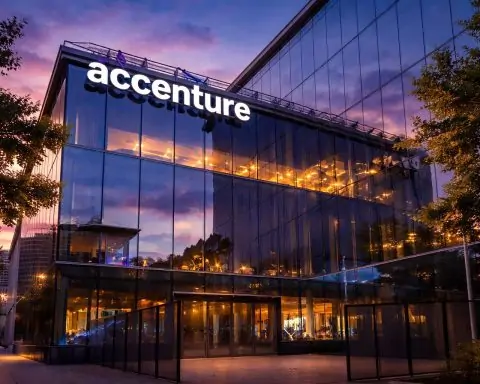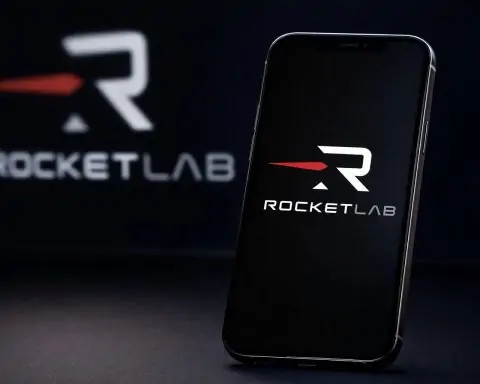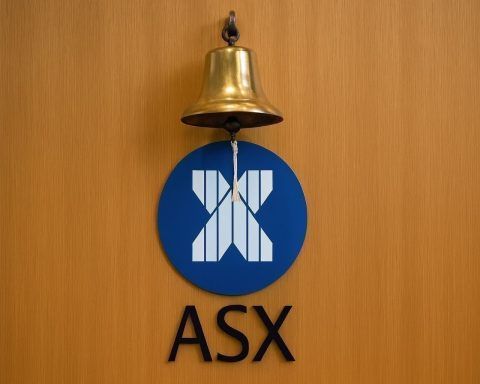Sydney, Friday 28 November 2025 – BHP Group Ltd (ASX: BHP), the world’s largest listed miner, ended Friday’s session slightly weaker as investors weighed a busy mix of corporate headlines: the collapse of its latest Anglo American approach, escalating iron ore tensions with China, a major UK court ruling over the 2015 Brazil dam disaster and a key shareholder class action deadline that falls today.
BHP share price on 28 November 2025
On the ASX, BHP shares closed at A$41.58, down about 0.4% for the day. The stock traded between A$41.29 and A$41.69 after opening at A$41.35, with around 1.4 million shares changing hands, a little below the recent average daily volume of roughly 1.7 million. [1]
Over the past twelve months, BHP has delivered a modest positive return of around 3%, trading within a 52‑week range of A$33.25 to A$44.55. [2] That leaves the stock in the middle of its recent trading band after a volatile November marked by deal speculation, regulatory friction and legal risk.
In London and New York, BHP’s secondary listings (LSE: BHP, NYSE: BHP) have broadly tracked the Australian line, with global investors reacting to the same mix of copper, iron ore and litigation headlines. [3]
Anglo American takeover shelved – strategy swings back to “organic growth”
The biggest strategic story still hanging over BHP’s share price today is its abandoned bid for Anglo American.
On 24 November, BHP confirmed in an exchange release that it is “no longer considering a combination of the two companies” after preliminary discussions with Anglo’s board. Management reiterated that, while a deal would have had “strong strategic merits”, it remains “confident in the highly compelling potential of its own organic growth strategy.” [4]
Reuters and other outlets report that this was effectively a last‑ditch attempt to derail Anglo American’s proposed US$60 billion merger with Teck Resources, which would create a copper heavyweight and intensify competition in energy‑transition metals. [5]
Commentary has been bruising. Reuters Breakingviews described the failed approach as a “dud swan song” for CEO Mike Henry, noting that this is BHP’s second unsuccessful run at Anglo after a rejected offer in 2024. [6] The Australian Financial Review has highlighted that BHP trades on roughly 15 times earnings, well below pure‑play copper peers such as Freeport-McMoRan and Antofagasta, which enjoy materially higher multiples. [7]
For investors, the message going into December is clear: large-scale M&A is off the table, at least for now, and the market will judge BHP on how it executes its existing project pipeline rather than on transformational takeovers. [8]
China iron ore dispute: volume risk vs price support
Another key driver behind BHP’s risk profile today is its escalating standoff with China’s state iron ore buyer, China Mineral Resources Group (CMRG).
Over the past week, Reuters has reported that CMRG has expanded a ban on certain BHP iron ore products, instructing Chinese mills and traders to stop buying Jinbao fines, a low‑grade ore, on top of a prior halt on Jimblebar Blend Fines imposed in September. [9]
A separate Reuters piece notes that this dispute over 2026 contract terms has tightened iron ore supply, pushing Chinese buyers toward Rio Tinto’s Pilbara Blend Fines and draining inventories, even as steel demand softens. [10]
For BHP shareholders, today’s share price sits against that backdrop:
- Commercial risk: targeted bans on specific products can disrupt marketing channels and potentially squeeze margins if BHP has to redirect cargoes or accept discounts.
- Price tailwind: by constraining certain supply streams, the stand‑off has paradoxically helped support benchmark iron ore prices, which remain firm despite weak steel output. [11]
The company itself has declined to comment on the negotiations, but in its October operational update BHP reaffirmed FY26 iron ore production guidance of 284–296 Mt and expressed confidence in long‑term iron ore demand, even as Chinese growth slows. [12]
Legal overhangs: UK dam ruling and today’s class action deadline
UK High Court finds BHP liable for 2015 Brazil dam collapse
On 14 November, London’s High Court ruled that BHP is liable under Brazilian law for the 2015 Fundão dam collapse at the Samarco joint venture in Mariana, Brazil – widely described as the country’s worst environmental disaster. [13]
Reuters has reported that the group lawsuit has been valued by claimants’ lawyers at up to £36 billion (about US$48 billion), though any final amount will depend on a separate damages trial scheduled for 2026, and analysts expect BHP’s incremental exposure to be far below that headline figure given prior settlements and shared liability with Vale. [14]
BHP has indicated it will appeal the ruling and argues that many claimants have already received compensation in Brazil. [15] The decision nonetheless adds another significant legal overhang that markets must price in when evaluating BHP’s balance sheet strength and future payout capacity.
Australian shareholder class action: key deadline falls today
Separate from the UK proceedings, BHP is also moving toward resolution of the Australian Samarco securities class action.
In September, BHP announced a conditional settlement of A$110 million, subject to Federal Court approval, to resolve claims from investors who bought BHP securities ahead of the 2015 disaster. [16]
Today, Friday 28 November 2025 at 4:00 pm AEDT, is the court‑ordered deadline for group members to object to, or request to participate in, the proposed settlement. [17] A settlement approval hearing is scheduled for 5 December 2025 in the Federal Court. [18]
These proceedings are civil in nature and the proposed settlement is without admission of liability by BHP, but together with the UK ruling they reinforce that litigation remains a material, multi‑year risk factor for the stock.
Growth narrative: Chilean copper, potash and “near‑zero emissions” iron
Despite the noise around Anglo American and litigation, much of the medium‑term investment case for BHP today still hinges on copper, potash and decarbonisation‑linked growth.
Chile in focus
A fresh piece from Australian Resources & Investment on 28 November highlights how BHP is “turning up the spotlight on Chile” as copper demand surges. [19]
Chile already hosts BHP’s flagship Escondida mine, the world’s largest copper operation, and the company has repeatedly pointed to copper as a core beneficiary of electrification, EVs and grid expansion. Earlier this year, industry coverage noted that BHP mined around 2 million tonnes of copper in FY25, underpinning its positioning as a key supplier to renewable and EV supply chains. [20]
BHP’s first‑quarter FY26 update (to 30 September 2025) showed:
- Copper production up about 4% year‑on‑year, to roughly 494 kt, driven by South American assets.
- Continued progress at the Jansen potash project in Canada, with Stage 1 over 70% complete and Stage 2 under way. [21]
These numbers help explain why several recent investor pieces frame BHP as a leveraged play on the copper cycle rather than just a pure iron ore giant.
Green steel partnerships
On the steel decarbonisation front, BHP and South Korean steelmaker POSCO signed an agreement in late October to advance production of “near zero‑emissions” iron, using hydrogen‑based technologies and an electric smelting furnace. [22]
The demonstration plant in Pohang is expected to start operating around 2028 with a capacity of about 300,000 tonnes per year, aiming to slash CO₂ emissions per tonne of steel far below traditional blast furnace levels. [23]
While this project is years from commercial scale, it feeds into a broader theme that investors are watching today: BHP’s ability to stay relevant in a decarbonising steel sector where ore quality, processing routes and partnerships will shape long‑term demand for its products.
Income and valuation: how the market views BHP right now
Despite recent volatility, BHP remains a core income stock for many Australian portfolios.
A new article from The Motley Fool Australia this morning highlights BHP alongside other large‑cap dividend names as potentially “in the buy zone” for income‑focused investors, pointing to the miner’s fully franked dividends and leverage to global resources demand. [24]
Earlier in the year, Rask Media argued that investors “can’t ignore” the BHP share price, noting that even small moves in iron ore or copper can significantly affect the group’s cash flows and payout capacity. [25]
That said, not everyone is exuberant. Back in mid‑2025, Argus Research downgraded BHP from Buy to Hold, citing cyclicality, capital‑intensive growth and emerging legal and ESG risks even as it acknowledged the company’s strong balance sheet and portfolio quality. [26]
Analysts quoted in the AFR and Reuters coverage of the Anglo bid saga have emphasised:
- BHP trades on a lower earnings multiple than many copper‑heavy peers, reflecting both its diversified commodity mix and the overhang from iron ore and litigation. [27]
- Investors now want to see disciplined capital allocation, with focus on copper, potash and green steel partnerships rather than giant, complex takeovers. [28]
Key things BHP shareholders are watching after today
As of 28 November 2025, BHP’s share price is digesting a dense cluster of near‑ and medium‑term catalysts:
- Anglo American / Teck merger: If Anglo’s shareholders approve the US$60 billion tie‑up with Teck at the December 9 vote, the copper competitive landscape will shift again – without BHP at the centre of that deal. [29]
- China iron ore negotiations: The outcome of CMRG contract talks – and whether product bans are lifted or broadened – will shape BHP’s iron ore realised prices and market share into 2026. [30]
- Fundão dam litigation: Appeals in the UK case and the 2026 damages trial timeline will be closely tracked by credit and equity analysts modelling worst‑case scenarios. [31]
- Class action settlement: Today’s objection/participation deadline and the 5 December Federal Court hearing will determine whether the A$110 million Australian settlement proceeds, drawing at least one long‑running shareholder action closer to closure. [32]
- Project delivery: Execution on Chilean copper assets, Jansen potash and green‑steel partnerships such as POSCO will increasingly drive how the market values BHP’s growth beyond iron ore. [33]
Bottom line
Today’s slight pull‑back in the BHP share price is happening against a backdrop of strategic reset, geopolitical friction and major legal turning points. The Anglo American bid is over for now, but the consequences – including BHP’s renewed emphasis on organic growth in copper and potash – will shape the stock for years.
At the same time, the China iron ore dispute and Brazil dam ruling underline why markets still demand a risk discount, even for a miner with BHP’s scale and balance sheet strength.
For investors following BHP into December, the focus is likely to stay on three questions: How resilient are cash flows if China remains tough, how costly will legacy litigation become, and how successfully can BHP translate its Chilean copper and green‑steel ambitions into earnings and dividends?
References
1. www.investing.com, 2. www.investing.com, 3. www.investing.com, 4. www.bhp.com, 5. www.reuters.com, 6. www.reuters.com, 7. www.afr.com, 8. www.reuters.com, 9. www.reuters.com, 10. www.reuters.com, 11. www.reuters.com, 12. www.reuters.com, 13. www.reuters.com, 14. www.reuters.com, 15. www.reuters.com, 16. www.bhp.com, 17. www.bhpclassaction.com, 18. www.bhpclassaction.com, 19. www.australianresourcesandinvestment.com.au, 20. carboncredits.com, 21. www.reuters.com, 22. www.reuters.com, 23. www.reuters.com, 24. www.fool.com.au, 25. www.raskmedia.com.au, 26. www.gurufocus.com, 27. www.afr.com, 28. www.reuters.com, 29. www.ft.com, 30. www.reuters.com, 31. www.reuters.com, 32. www.bhp.com, 33. www.australianresourcesandinvestment.com.au









